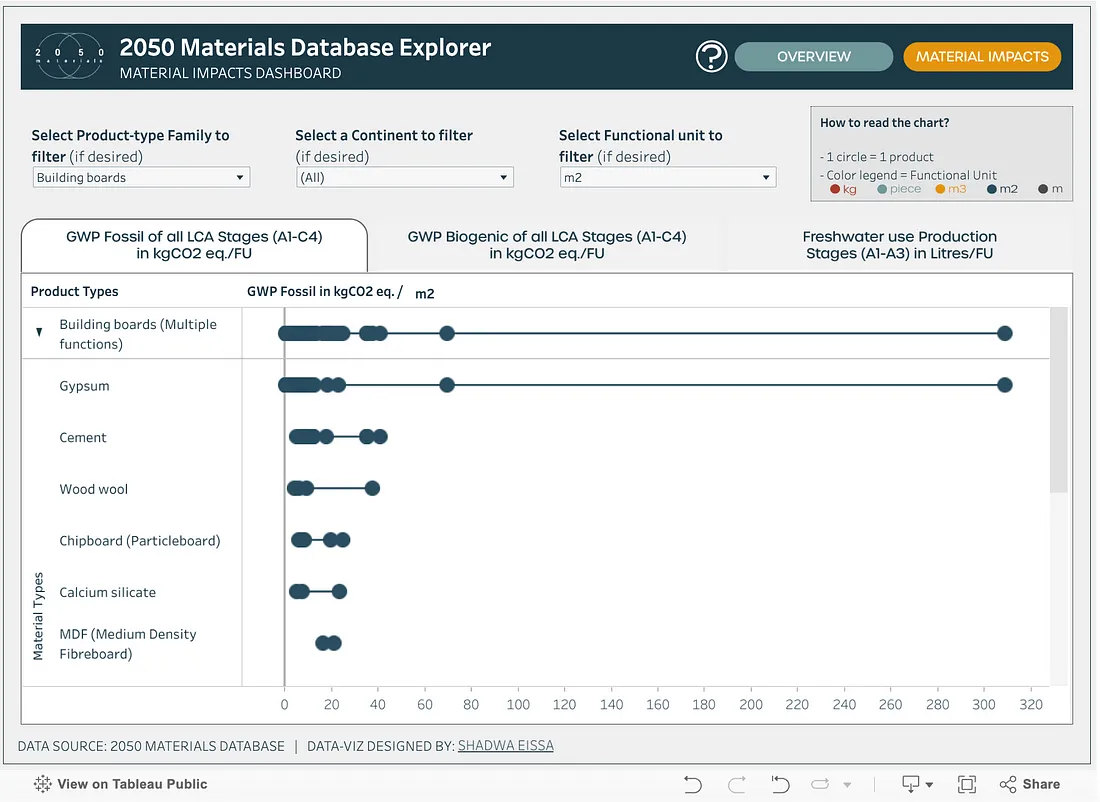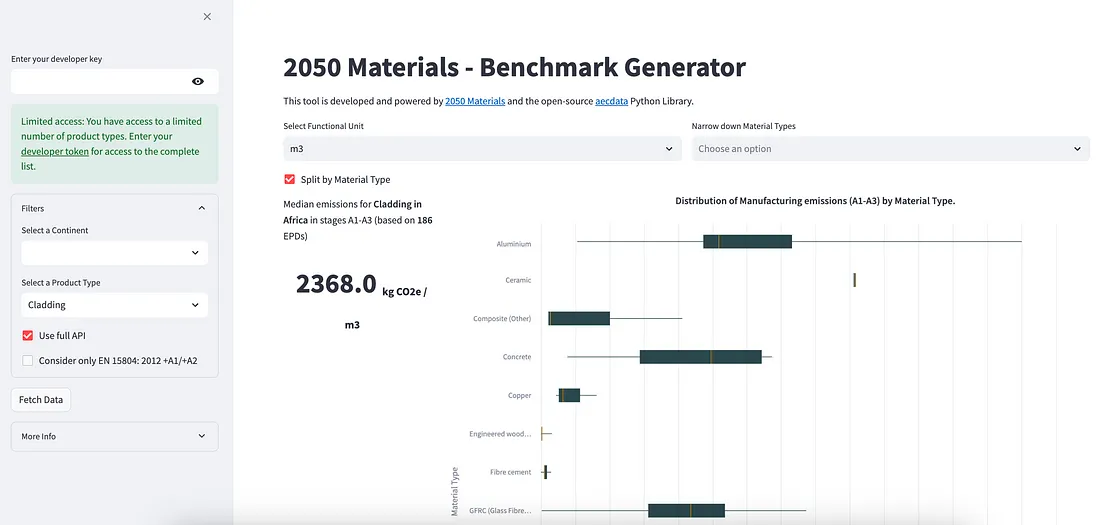Net Zero is a Data Integration Problem
In recent years, numerous organizations in real estate and infrastructure have committed to ambitious net zero targets. This means reducing reliance on non-renewable energy and materials and adopting more sustainable design, engineering and procurement practices. Governments are also investing in green recovery strategies.

While these long-term net zero goals are commendable, they require concrete decarbonization pathways. The challenge is to align these long-term goals with everyday operations.
 To achieve this, decision-makers need detailed, data-driven insights.
To achieve this, decision-makers need detailed, data-driven insights.
This article explores common pitfalls in decarbonization efforts in the built environment and how 2050 Materials can help AEC organizations meet their (or their clients’) net zero objectives.
The Limitations of Carbon Calculators
Organizations typically set net zero targets by:
- Estimating overall emissions (usually too late in the process)
- Setting reduction goals.
- Breaking these goals down annually for various business units.
Many organizations use carbon calculators, which multiply the quantity of an activity (or materials) by its carbon coefficient. For example, if we use 10’000 m2 of fire-resistant plasterboard at a thickness of 15mm with a carbon intensity of 7.8 kg CO2e / m2 (source), the total emissions are 78 tonnes of CO2e. Manufacturers use similar calculations for their supply chain, production, and distribution activities.
However, carbon calculators offer only rough estimates at a late-enough stage when core decisions that can influence the result are already locked in. It’s like calculating the cost of your grocery shopping right before paying.
Carbon Calculators (at least the ones the industry is using today) don’t track emissions in real time nor point to the exact process or stakeholder responsible, resulting in an incomplete picture that can’t be thoroughly analyzed.
For a detailed net zero pathway, organizations need precise emission tracking connected to operations and day-to-day decisions.
 For instance, a contractor tasked with reducing emissions during the procurement phase of a project needs to see the impact of their decisions on embodied carbon emissions. Without this visibility, they rely on assumptions about the supplier, quantities on site, and experience with specific materials, missing potential optimizations.
For instance, a contractor tasked with reducing emissions during the procurement phase of a project needs to see the impact of their decisions on embodied carbon emissions. Without this visibility, they rely on assumptions about the supplier, quantities on site, and experience with specific materials, missing potential optimizations.
How 2050 Materials Can Help
Precise Impact Tracking
2050 Materials provides tools and data to integrate and visualize the carbon (and other impacts) impact of various processes in construction in real-time. This detailed approach helps identify low-carbon opportunities and improvements.
Comprehensive Data Integration
The 2050 Materials API adds a layer of classification and augmented data to open databases (like the comprehensive EC3 database). This allows AEC companies to integrate this critical data into existing workflows (e.g. their design or procurement tools). In turn, this enables them to make informed decisions about carbon impacts, such as selecting sustainable materials or optimizing routes.
Carbon Scenario Modeling
Our modeling tools simulate different carbon scenarios, addressing questions like “Which building materials reduce emissions and costs?” and “What infrastructure investments will meet long-term CO2 targets?” These models help analyze past decisions to improve future strategies.
Contact us at info@2050-materials.com for more information on these modeling tools.
Data visualization
In the name of democratizing climate data (to enable the AEC industry to become climate-neutral), we are continuously pushing the envelope in terms of visualizations of this data. Some examples include our embodied carbon benchmark tool, as well as our Data Explorer dashboard.

You can see some public case studies where we’ve helped companies track and reduce impacts here.

From Commitment to Action
Clients use 2050 Materials to create a carbon-focused operational overview, enabling collaboration across all parts of the organization toward net zero. Key elements include:
- Data Integration: Combining various data sources for a complete emissions picture and enabling precise carbon impact questions.
- Scenario Modeling: Simulating carbon scenarios to simplify cost-benefit analysis and improve decision-making.
- Rapid Adaptation: Flexible tools to quickly respond to new climate policies and technologies.
Achieving net zero requires detailed data integration, precise carbon tracking, and scenario modeling. These tools help decision-makers connect carbon metrics with operations and individual actions, creating tailored pathways to net zero.
If you’re interested in using 2050 Materials to support your organization’s transition to net zero, contact us to learn more.
Related articles

Climate-Resilient Materials for the Built Environment: A Data-Centred Prime
As climate volatility intensifies, resilience metrics are fast becoming as critical as carbon data in material selection. This article outlines why adaptation is now a design imperative, how materials can be evaluated through a systems lens, and what KPIs project teams should demand. From self-healing concrete to fire-rated façades, we present a structured taxonomy of resilient materials, explain how to embed this intelligence into digital design workflows, and propose next steps for specification, benchmarking, and procurement.
Read more
The Most Interesting Low Carbon Products in Office Design
In this article and collection, we highlight 11 outstanding products that contribute to a lower carbon footprint in office design.
Read more
Top Low Carbon Building Boards: Performance, Benefits, and Use Cases
The building boards highlighted in this article and collection showcase low-carbon innovation in modern construction.
Read more